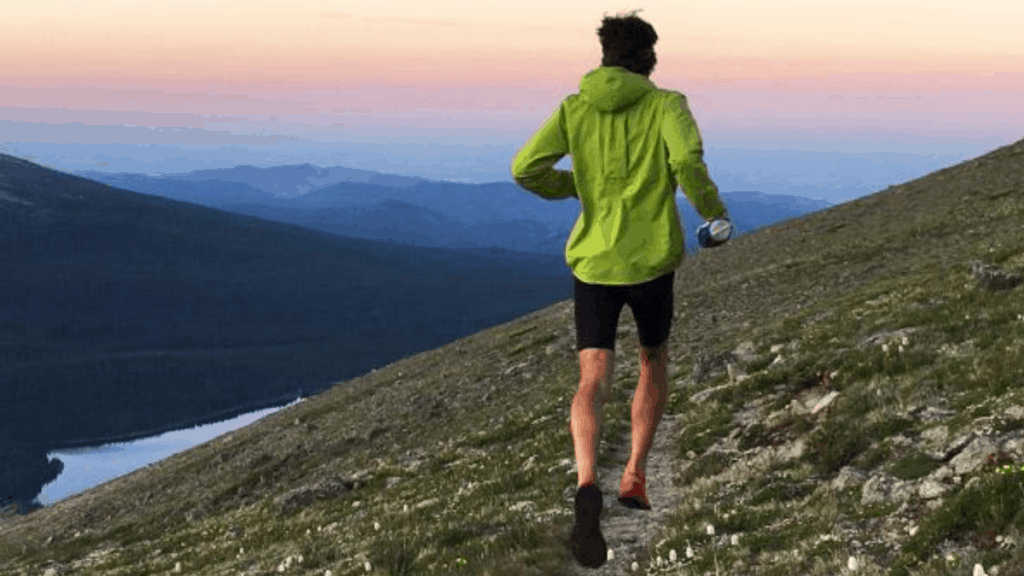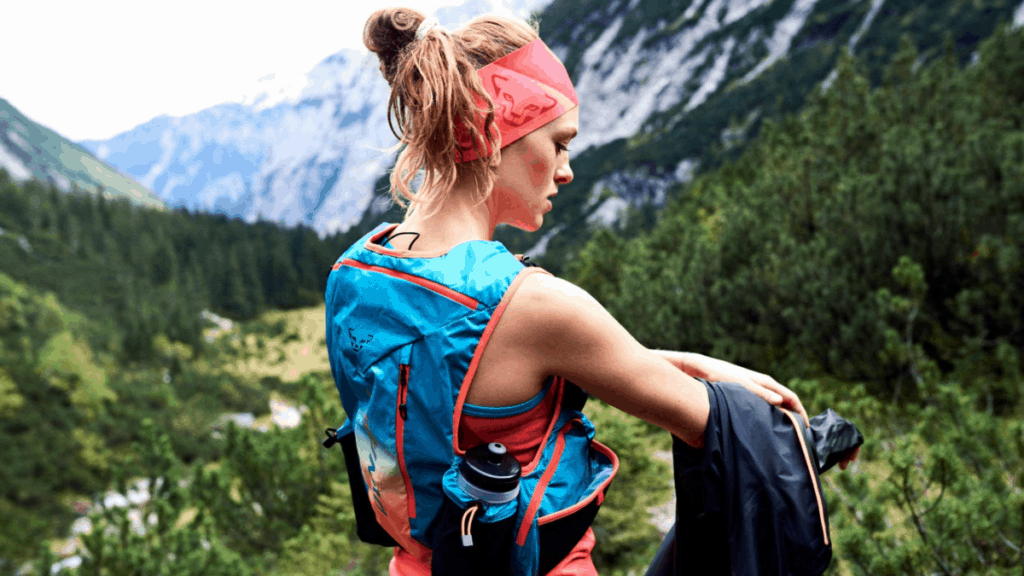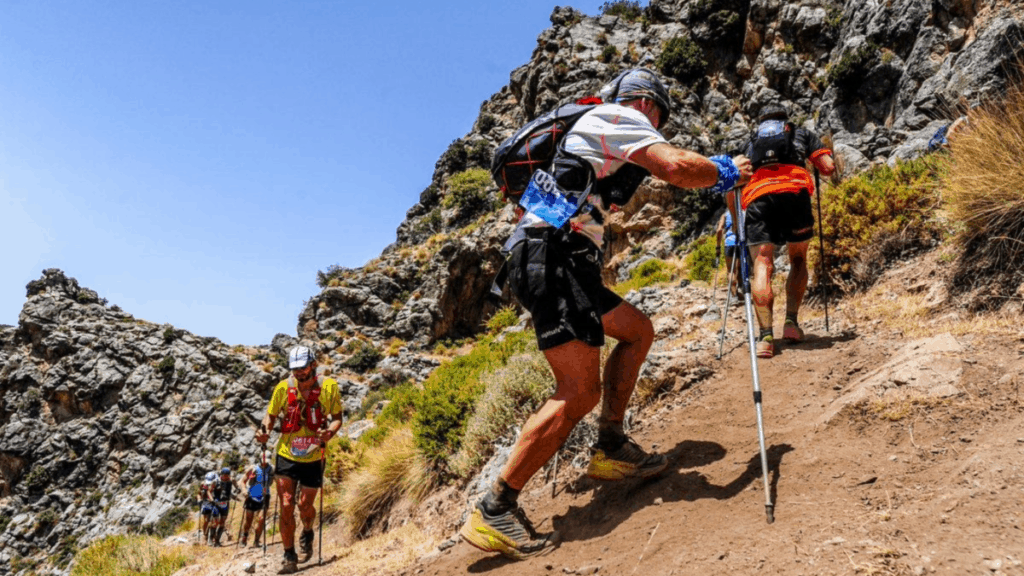
When you go for a trail-run you are pushing your body weight up into the air one-legged with each and every step. Little wonder that new trail runners find it so hard to do.
Trail running is all about overcoming difficulties. So, as trail runners, let’s look at the factors that make trail running so hard as well as what your options are to be able to overcome each of them.
Running Is A Natural Form Of Movement
Running, in general, is something that we don’t need to be taught. It is something that comes naturally to us very close on the heels of taking our first walking steps as a baby.
With that being said we all experience those low spots out on a trail run where everything feels dreadfully hard and seems to try and force us to stop completely.
There is a fairly well-known expression in ultra-distance trail running that if everything is going smoothly and feels easy and comfortable, don’t worry because that feeling will pass.
Your Shoes Can Make Running Feel Hard
Make sure that you choose a trail run specific pair of shoes for the type of terrain that you will be running on.
It is true that you can use your road shoes out on the trails if you are just trying out trail running to see if it is something that you enjoy, just know that traction will likely be an issue for you due to the relative lack of grip compared to the soles of trail running shoes.
While on the subject of your shoes, make sure that they fit you properly and are comfortable.
I remember a pair of road shoes that I had bought through the internet without taking the time to find out that they have a tight, narrow toe box. Overall, I ran well in them in spite of my toes being in pain and even getting blood-stained socks as toenails dug into the side of adjacent toes.
I was relatively lucky because ill-fitting shoes can lead to potential injuries that could sideline you for a season or more. This is even more true if you hit the trails in sneakers that are not even designed for running at all.
Choose Clothing Of Technical Fabrics That Can Be Layered
When it comes to clothing for trail running, having the wrong clothing can make your run feel very hard.
I am not saying that you need to go out and break your credit score to get the latest and greatest in trail running gear.
What you will need is clothing that won’t restrict your movement while you are running.
If the weather is cool or even cold out always layer your outer clothes rather than go for a single big, bulky item. The reason for this is that the act of running on the trails will build up body heat.
This means that as you heat up you can shed layers, then add them back on as you cool down.

If at all possible I choose layers that fold up really small and I head out onto the trails with the gear bag part of my hydration pack almost empty. That way I have plenty of packing-space as I begin to shed layers.
If it is crisp when you head out onto the trail, always remember your beanie. It is a layer that takes up hardly ant space but makes a massive difference. In mountaineering, we always used to say that if your feet feel cold it is time to put on your beanie.
Protect Yourself From Chaffing
When you run in the heat or go for a really long run there is always a chance that you can chafe in certain parts of your body.
Having a small tube of some sort of anti-chafe lubrication in your trail running pack is a must.
And ladies, take the time to make sure that you have a correctly fitting sports bra. Besides giving you the support that you need for comfort while you are running, the straps and band of an ill-fitting sports bra can easily become points of painful chaffing.
Wear Sunscreen And A Hat
Another thing that can make trail running feel hard is a severe sunburn.
Aside from the obvious discomfort of running when you have painfully inflamed, sun-damaged skin you are also putting yourself at risk of skin cancer.
So wear sunscreen and a hat. I know there is a theory going around that wearing sunscreen can seal in the heat and impede your performance. I wrote a detailed article about that covering the clinical studies debunking that myth. You can find the article on Trail Run Planet by clicking here.
Dealing With Breathlessness
This is the one thing that made trail running feel so hard for me when I started. It would take no more than a couple of hundred yards for me to start feeling out of breath. When the trail tilted uphill the situation would get worse.
If this is how trail running makes you feel as well, then I have some good news for you. As you gain fitness and experience it will start getting better.
All it will require is for you to slow down and even take walk breaks to bring your breathing back under control.
Coping With Boredom
From my perspective boredom is more of a road running issue than something that happens while trail running.
For me just being out in nature and navigating the obstacles along the trail is more than enough to keep my mind occupied.
Perhaps you need more to keep you going. In that case, a set of headphones and a podcast, audiobook, or music could be your answer.
There is one thing that I often do out on the trails is mental games of time vs distance over different terrain. In other words, I try and predict how long it will take me to get to a certain landmark along the trail, then see how long it actually takes me.
Besides keeping my mind busy, it also improves my navigation skills.
Doing Too Much Too Soon
There is a reason why the 10% rule was developed. It stops you from overloading your system before you are strong enough to handle it.
Besides an injury risk, ignoring the 10% rule and doing too much too soon will make your running feel way more difficult because you pushing against waves of self-induced fatigue.
Preventing Stiffness
There is something that is common when you are starting out and that is you should expect a certain amount of muscle stiffness.
It stands to reason because you are asking your body to do something that you have not done before.
The trouble with muscle stiffness is that it is what often puts people off from continuing with our wonderful sport after they have given it a try. Don’t let that be you.
In order to ward off the muscle stiffness and soreness from your trail run, do some light stretching as a warm down after your run. This will gently squeeze out the lactic acid trapped in your muscles before it cools and causes you pain.
If you have access to a foam roller, put that to good use and you may be able to wake up the next morning pain-free and rearing to go for your next trail run.
You Are Not Too Slow
One of the most common excuses I hear from new runners is that they are too slow to be a trail runner.
If this is what is holding you back then I have a very good piece of news for you. There is no such thing as too slow in trail running. The terrain of trails makes everyone slow.
When I first got into running many years ago, I remember hearing the expression that if you run then you are a runner. There is no minimum distance or minimum pace to qualify. If you get out the door or onto the treadmill you are already beating the millions who never make it off the couch.

Trail running takes that to a completely different level. When running on the road, most runners track their progress by measuring their pace in minutes per mile. That is because a mile on the road is more or less the same no matter where the road is, not counting for the steepness of any hills.
When you run on trails maintaining a target minutes per mile pace becomes irrelevant as no two miles along the trail are the same. Even elite runners walk sections of the trail during races.
The most extreme example of how much slower trails make all of us is the infamous Barkley Marathons. The cut off time equates to an average pace of just under 28 minutes per mile. Yet, as of 2020, only 15 runners have finished within the cut off time in the 33 editions of the event.
So go and enjoy the trails knowing that in trail running there really is no such thing as too slow.
Make Easy Days Easy Enough
When it comes to training in trail running around 80% of your time out on the trails should be done at what is an easy pace for you.
The general principle is that if you head out for a trail-run with your friends you should be able to maintain a conversation all the way through. If you find yourself getting out of breath while chatting to your friend it means that it is time to slow down and maybe even take a walk break.
If elite runners do over 80% of their running at a slow conversational pace, why should you be pounding yourself into the dust on every run?
Losing Motivation
Lack of motivation is something that happens to all of us from time to time. Usually, when you lack motivation it is just a matter of finding a way to start your trail run.
What I find is that no matter how unmotivated I feel before a run, once I am out on the trails it is easier to keep going to the end of the run than it is to quit.
Signing up for an event is a good way to motivate yourself to keep training because there is a goal that you are building up for.
In much the same way, setting a goal of going out and running a new trail is also motivating. After all, you want to be fit enough to really enjoy the experience of running the new trail.
Something else that is very motivating is when you get some new kit, like a new pair of trail running shoes. Whenever I have a new pair of trail running shoes I am always keen on testing them out at the first opportunity.
Look At Trail Running With Gratitude
Instead of focussing your mind on all of the reasons why trail running feels so hard, think instead of how wonderful it is that you get to spend time out in nature.
It is as simple as switching your internal dialogue from “I have to go for a trail-run today” to “I get to go for a trail-run today.“
Being able to get out onto the trails and breathe some fresh air while you run is something that many runners don’t get to be able to do because of where they live and life circumstances.
So appreciate each and every moment you get to have out there and be safe while you do so.
